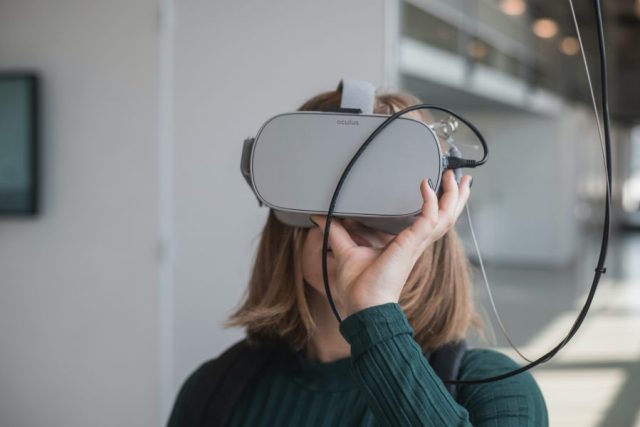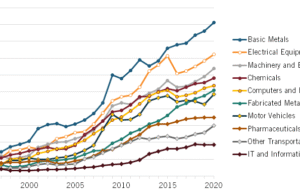As the workplace continues to evolve, technology is playing an increasingly important role in improving productivity and efficiency. Companies of all sizes are looking for ways to leverage new technologies to drive innovation, reduce costs, and remain competitive. So what can we expect from the corporate world five years from now?
In this blog post, we will explore some of the cutting-edge workplace technologies that have been developed over recent years and discuss potential implications on how people will work differently in the future. With rapid advances in tech being made every day, it’s exciting to think about where we may be headed!
What Technologies Will Dominate The Workplace In 5 Years?
As we continue to rely more and more on technology to get our work done, we must also keep up with the latest advancements to stay competitive. So what technologies can we expect to see dominating the workplace in the next five years? According to the pros at getjoan.com, with the rising of remote and hybrid work, you want to implement technologies that will enhance productivity, collaboration, and team-building. You might want a workplace management system and tech solutions that suit your business needs. Some of the most promising tech tools to look out for are:
- Voice recognition software: This technology enables users to speak commands into their devices, which can be used to make calls, and update emails or documents on the go.
- Video conferencing software: As more employees are working remotely, video conferencing has become an indispensable tool for virtual meetings.
- Artificial intelligence (AI) applications: AI can be used to automate mundane tasks or analyze large amounts of data quickly and accurately, leaving more time for creative work.
- Wearable technology: Smartwatches, fitness trackers, and other wearable devices will be increasingly used in the workplace to measure employee performance and provide real-time feedback.
Ai, Automation, And Robotics
Businesses and employees alike have been affected by technological innovations and their implications cannot be ignored. While AI, automation, and robotics all have the potential to increase efficiency and reduce costs for businesses, they also pose a real threat to employees.
With more and more tasks being automated, workers may face job displacement or a shift in their skillset requirements. However, this does not mean that all hope is lost. Businesses can explore ways to incorporate these technologies while still valuing their employees and investing in their upskilling. Remember that these tools are not meant to replace humans but to enhance their capabilities and improve their working conditions.
Virtual Workspaces
It’s no secret that remote work has become more prevalent than ever before. Virtual workspaces have shown to be an efficient and cost-effective solution for numerous companies. As more and more businesses adopt remote work as a long-term solution, it begs the question of how it may evolve in the future.
Artificial intelligence, virtual reality, and big data analytics are just a few areas that are poised to play a significant role in the evolution of remote work. From enhanced collaboration tools to virtual meetings through VR, the possibilities for remote workers to connect and thrive seem endless. The seamless integration of technology into virtual workspaces will continue to shape the future of work and unlock countless opportunities for businesses to grow.
Data Management
Proper data management involves the secure storage of sensitive information while ensuring strict adherence to privacy laws. When protecting sensitive data, you must maintain confidentiality, integrity, and availability.
In the future, data management may become even more sophisticated with the help of blockchain technology and AI-powered analytics. These tools can detect potential threats to your company’s data security and allow you to respond quickly and effectively.
Augmented Reality And Wearables
Augmented reality and wearables are changing the game of employee training and collaboration. If you incorporate technology into these processes, individuals are able to receive an enhanced experience that can assist in acquiring new skills or collaborating with others remotely.
Wearables in particular provide a hands-free approach, allowing users to engage and interact with their surroundings while still remaining connected to their devices. With augmented reality, users are able to visualize information in real time, making it easier to understand and retain. The combination of these technologies makes for a powerful tool that can revolutionize the way businesses operate.
The Internet Of Things
The Internet of Things (IoT) is another technology trend that is projected to have a significant influence on the future workplace. This technology facilitates the interconnection of everyday objects via the Internet, which enables them to collect and exchange data. In the workplace, IoT can lead to smarter work processes and efficiency improvements. For instance, smart sensors can automate lighting and temperature adjustments based on occupancy and time of day, leading to energy savings.
Not to mention, connected devices can provide real-time updates on inventory levels, equipment run times, and operational efficiencies, enabling businesses to react promptly to any changes and make data-driven decisions. As IoT technology continues to evolve, its applications in the workplace are expected to multiply, altering how we interact with our work environment.
Cybersecurity In The Digital Workplace
Given the proliferation of digital technologies in the workplace, cybersecurity has become a paramount concern. With increased connectivity comes greater vulnerability, making businesses prime targets for cyber threats. Therefore, enhancing cybersecurity measures is not just an option but a necessity.
Companies must invest in robust cybersecurity systems and employee training to combat potential threats, protect sensitive data, and ensure the integrity of their digital workspace. Naturally, cyber-attacks are inevitable, so it’s essential to have a strategy in place to detect and respond promptly.
The future of workplace technology is undoubtedly an exciting one, with plenty of potential for businesses to leverage the power of technology and stay ahead of the competition. By carefully considering which technologies to invest in, businesses can unlock an array of opportunities and maximize their potential. With the right tools and a strategic approach, you can transform your workplace into a safe, efficient, and productive environment for years to come.














